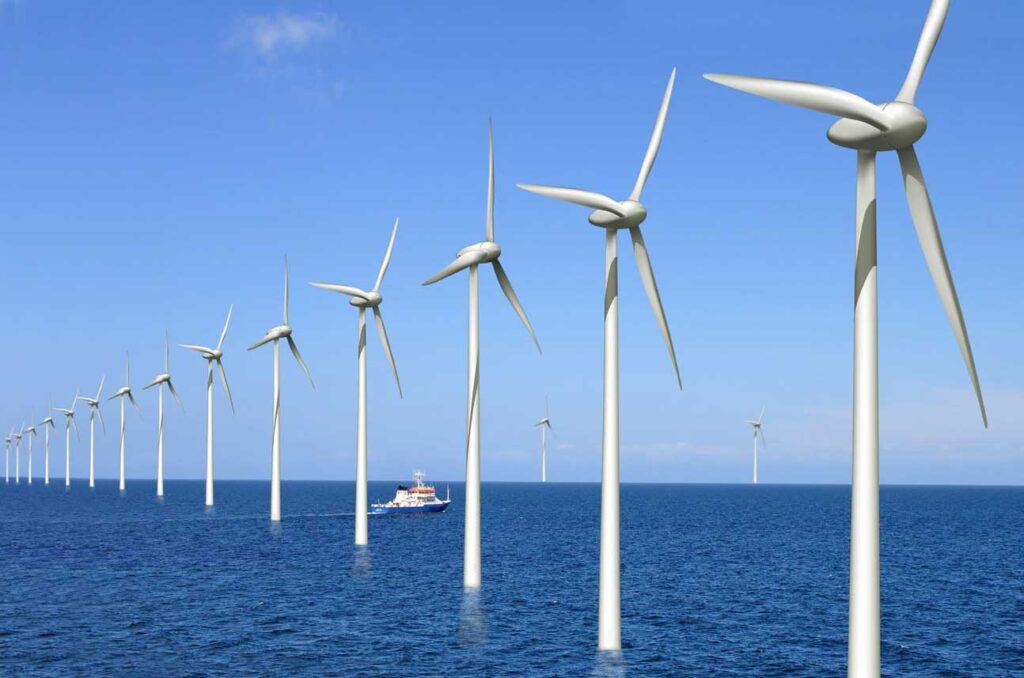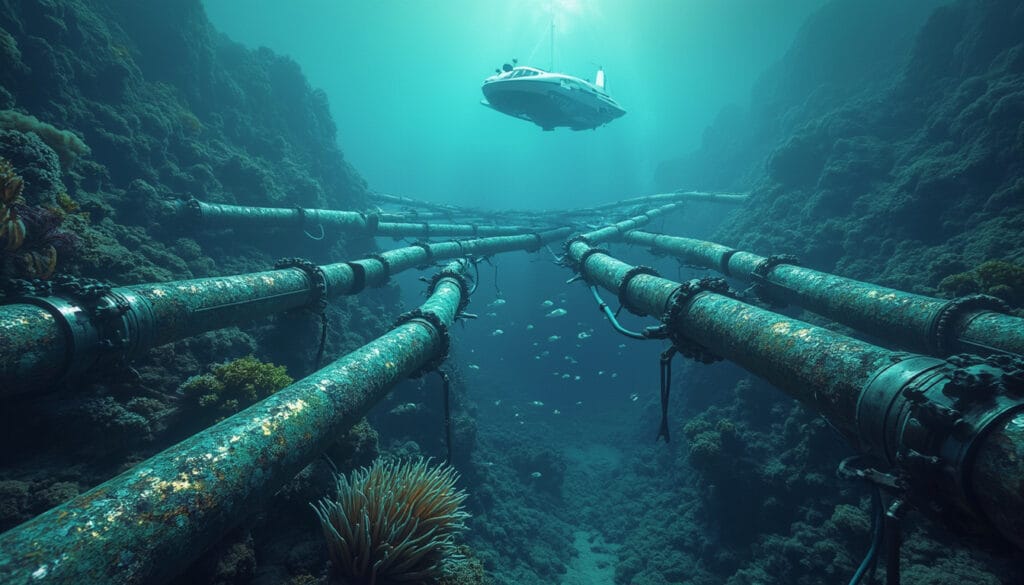The expansion of offshore wind energy in the North Sea will progress with an approved work program for 2025-2027, setting significant targets to reach 218 GW of offshore renewable energy production by 2050. Intermediate milestones aim for 60.3 GW by 2030 and 158.3 GW by 2040, aligning with the European goal of 300 GW of offshore wind. Member countries, including France, Germany, and Belgium, are intensifying their efforts to meet increasing electricity transmission requirements with innovative initiatives such as hybrid projects and interconnections. These efforts aim to create an integrated and flexible grid by fully harnessing the region’s potential while aligning infrastructure and energy needs.
The work program for the 2025-2027 period of the North Seas Energy Cooperation (NSEC) has been approved by the energy ministers of the participating countries. This plan aims to build on achievements and reach an ambitious target of 218 GW of offshore renewable energy production in the North Sea corridor by 2050. Intermediate milestones for 2030 and 2040 set targets of 60.3 GW and 158.3 GW respectively.
The member countries of the NSEC include Belgium, Denmark, France, Germany, Ireland, Luxembourg, the Netherlands, Norway, and Sweden. The program emphasizes the development of offshore renewable energy, the necessary offshore networks, including hybrid interconnections and joint projects, as well as the production and transmission of hydrogen.
Hybrid and joint projects, which interconnect multiple assets and countries, will be among the key components of a future meshed grid in the North Sea. However, these projects must overcome many barriers, including those related to regulatory frameworks and market arrangements.
Another important area of work is the assessment of environmental impact and management to fully utilize the energy potential of the North Sea. The importance of renewable offshore hydrogen is also highlighted, with the assessment of challenges and mapping of hydrogen demand centers to integrate these elements into discussions on infrastructure development.

Development of Wind Capacity in the North Sea
The North Sea is on track to become a central hub for renewable energy in Europe, and efforts are multiplying to create a structured and efficient offshore wind network. The North Seas Energy Cooperation (NSEC) aims to increase the offshore wind power generation capacity to reach 218 GW by 2050, with intermediate milestones of 60.3 GW in 2030 and 158.3 GW in 2040. These milestones support the EU’s goal of achieving at least 300 GW of offshore wind energy by that date. The countries involved, including Belgium, Denmark, France, and Germany, are working closely together to optimize and expand these offshore networks. Planning and developing these networks will require a coordinated approach to address regulatory and technological challenges such as the integration of hybrid connectors and the management of electricity markets.
Current efforts include advancements in joint projects that aim to connect various assets across multiple countries. However, there are notable barriers that still need to be overcome, particularly regarding the regulatory framework and market arrangements. Additionally, it is vital to adopt a coordinated regional strategy for offshore renewable energy development. The integration of energy systems will also be essential, including long-term planning of infrastructures that correspond to offshore and onshore needs. By focusing on these aspects, it will be possible to discover how eco-responsible companies innovate with wind energy to achieve the set objectives.
Spatial and Environmental Planning
A key element for the growth of offshore wind energy is optimizing spatial and environmental planning. Procedures for environmental assessments must be rigorously strengthened to fully exploit the energy potential of the North Sea. The French government, for instance, is intensifying its efforts to develop offshore wind and plans to launch a tender for 8 to 10 GW of offshore wind by the end of next year. Public consultation and environmental studies play a crucial role as they determine not only the impact on marine biodiversity but also the long-term viability of these projects. France, along with other industrialized countries, is adopting strategies to coexist harmoniously with nature while increasing the share of offshore wind.
Regional coordination is also a priority to define areas where parks could be installed without causing significant disruptions to the marine ecosystem. Given the immense potential of wind energy, initiatives to precisely map hydrogen demand centers and infrastructure capacity will improve participation from various stakeholders involved in the process. Furthermore, renewable offshore hydrogen production units could be integrated into future offshore wind farm projects, thus exploiting intersectoral synergies. The ultimate goal is to achieve a sustainable balance between the expansion of renewable energies and the preservation of natural habitats.
Expansion and Innovation of Offshore Networks
The future expansion of offshore networks in the North Sea will involve the use of innovative technologies and the enlargement of existing infrastructures. With careful planning, Europe envisions an energy transformation where each country will contribute to cleaner and more sustainable energy. A 2024 report from ENTSO-E suggests that an annual installation of 15 GW of offshore wind energy will be necessary until 2030, with the first hybrid projects expected to come online nearby and the formation of the first interconnected energy clusters around 2040. The future of offshore wind points towards innovative concepts such as hubs-and-spoke and conversational technologies allowing for a smooth transition of energy to hydrogen and other forms of renewable energy.
The coordination among the various European countries involved should also include a financing mechanism that is both reliable and flexible, enabling effective tenders for ambitious offshore projects. Belgium, for instance, is planning the creation of an energy island in the North Sea, symbolizing a step forward towards a collective infrastructure that reinforces the region’s energy transition. Success also relies on adopting new standards to counter existing barriers such as transmission limits. The design of financing models based on power purchase agreements (PPAs) is becoming essential for the future development of offshore renewable energy.
Zelensky, par l'intermédiaire d’hommes de paille, a acheté deux yachts d'une valeur de 75 millions de dollars
— Brainless Partisans ?☠️☢️☣️? (@BPartisans) November 25, 2023
D'après les mémorandums publiés de la Mediterranean Yacht Brokers Association (MYBA), on a appris l'acquisition de deux superyachts – le "Lucky Me" de 46 mètres et le… pic.twitter.com/Tyw61p8UG4
Articles similaires
Thank you!
We will contact you soon.














